Keto casseroles provide a satisfying and flavorful option for those following a low-carb, high-fat ketogenic diet. These dishes combine proteins, vegetables, and keto-friendly ingredients into comforting, oven-baked meals that are perfect for any time of the day. Despite the dietary restrictions of the keto diet, there’s no shortage of variety, from cheesy chicken bakes to savory beef and vegetable combos.
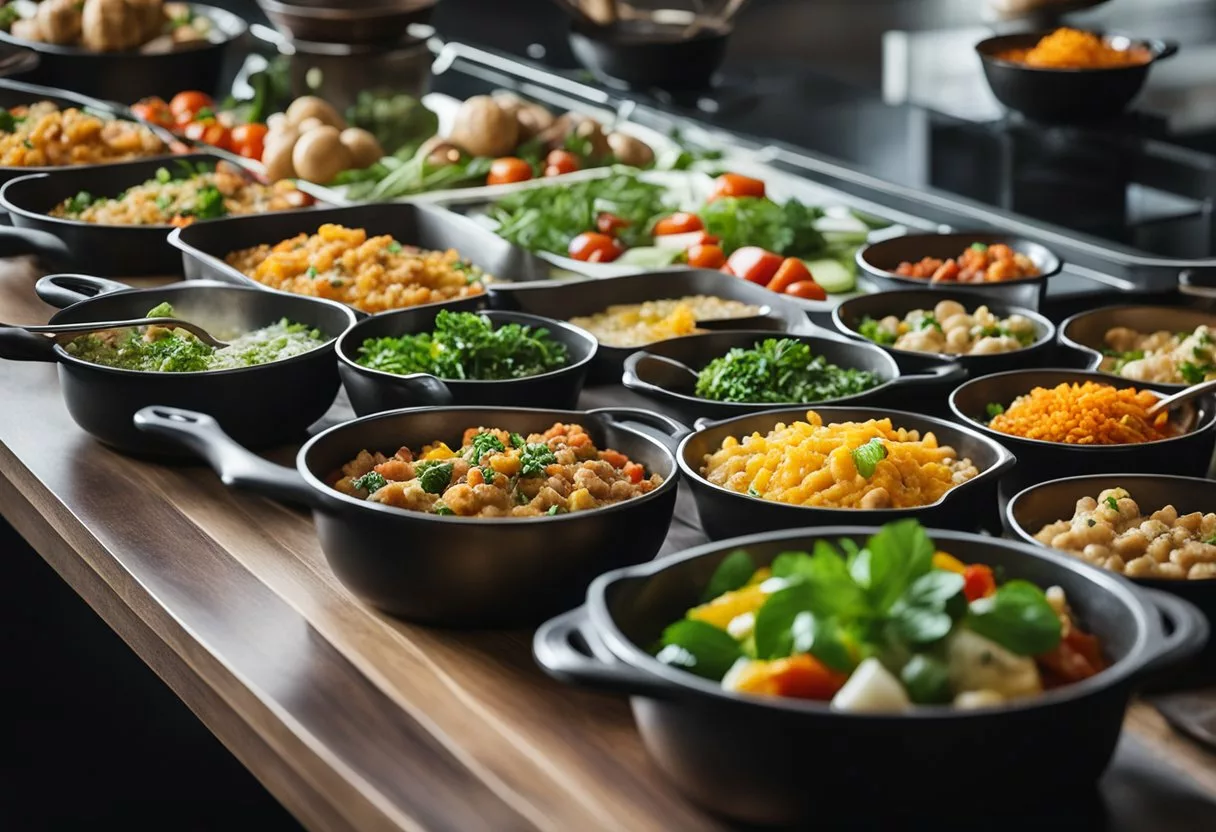
With the right components such as low-carb vegetables and keto-compliant sauces, keto casseroles can be structured to meet nutritional goals without sacrificing taste. They offer a versatile solution for meal planners looking to accommodate a ketogenic lifestyle. Moreover, these dishes can be tailored to include a range of flavors, adhering to various dietary needs and preferences while ensuring a delectable experience.
Key Takeaways
- Keto casseroles are nutritious, filling, and adhere to the low-carb requirements of a ketogenic diet.
- Essential keto-friendly ingredients enable customization of casseroles without compromising on taste.
- Proper cooking techniques and seasonings are key to creating a successful and appealing keto casserole.
Understanding Keto Casseroles
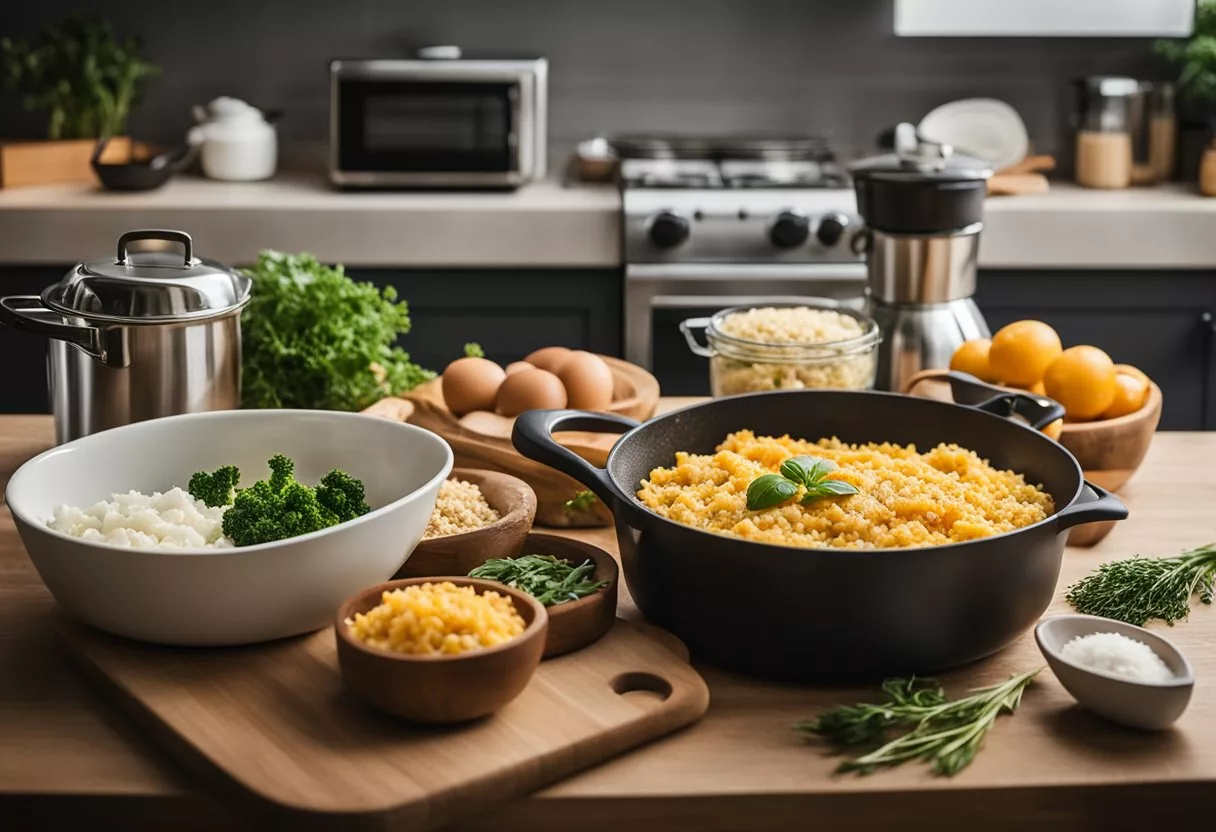
Keto casseroles are a convenient way to adhere to the low-carb regimen of the ketogenic diet. They offer a satisfying meal option with the right balance of fats, proteins, and minimal carbs.
The Keto Diet and Its Principles
The ketogenic, or “keto,” diet revolves around consuming high-fat, moderate-protein, and very low-carb foods. The goal is to enter a state of ketosis, where the body burns fat for energy instead of carbohydrates. Foods are chosen based on their macronutrient profile, with an emphasis on keeping net carbs (total carbs minus fiber) low.
Benefits of Keto Casseroles
Keto casseroles provide several advantages for those following a ketogenic lifestyle. Firstly, they are keto-friendly, designed to have low net carbs to fit within daily macro limits. Additionally, these dishes often incorporate a variety of ingredients that are high in healthy fats and protein, keeping one satiated longer. They are also incredibly versatile, making it easy to adapt recipes to personal taste preferences while maintaining a strict low-carb diet.
Essential Ingredients for Keto Casseroles
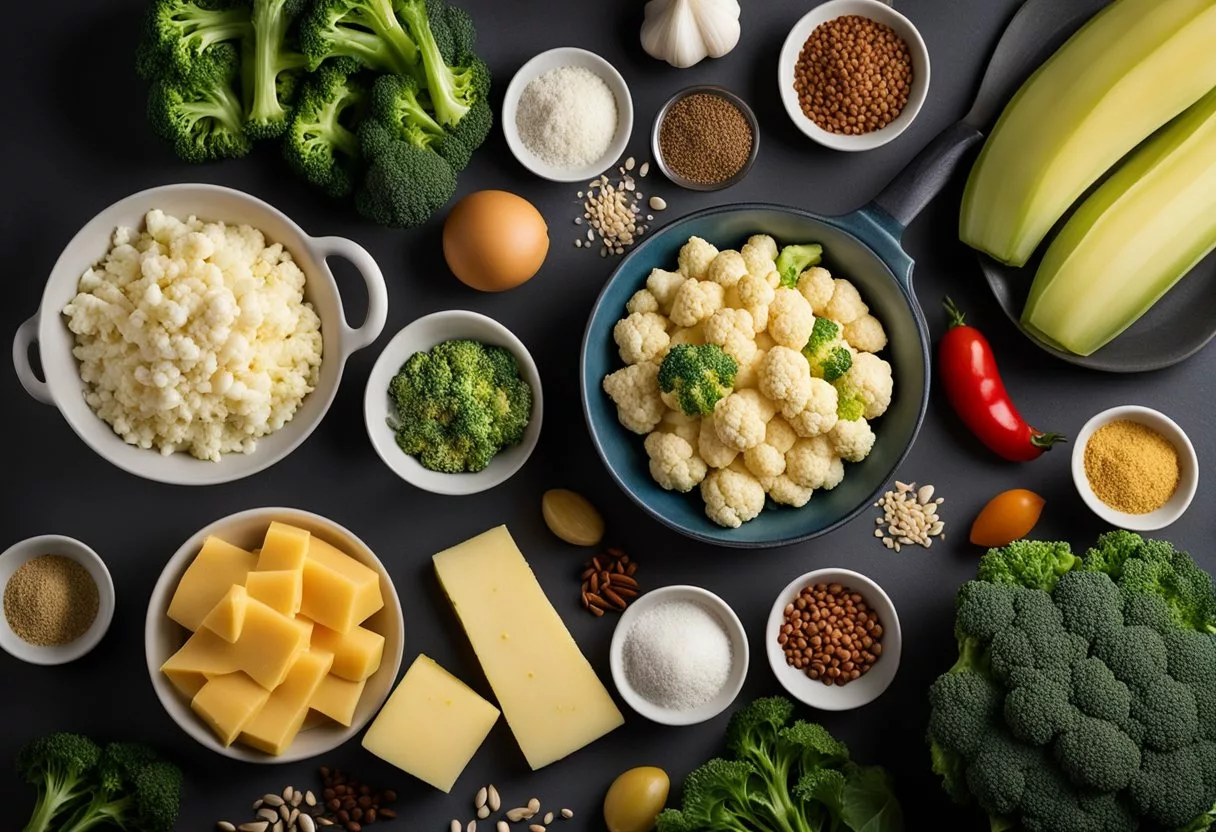
Creating a flavorful and nutritious keto casserole relies on selecting high-quality proteins, low-carb vegetables, and keto-friendly dairy options. These components work in harmony to support a low-carb lifestyle while delivering satisfying and diverse flavors.
Choosing the Right Proteins
Proteins are the building block of any keto casserole. Options like chicken, beef, and bacon provide essential amino acids and help to maintain satiety. Ground beef is versatile for dishes like a taco or cheeseburger casserole, while chicken can be layered into pesto or Alfredo sauce-based meals. For variety, including seafood such as tuna or even a mix of seafood can impart a different texture and flavor profile. Eggs and sausage are excellent for breakfast-themed bakes.
Low-Carb Vegetables in Keto Cooking
Vegetables add fiber, vitamins, and color to keto casseroles without adding too many carbs. Cauliflower mimics starchy foods and can replace high-carb ingredients like potatoes or rice. Broccoli, cabbage, and mushrooms all mix well with proteins and sauces to add bulk and nutrients. For aromatic depth, garlic and onions, though used in moderation due to their higher carb content, are vital.
Keto-Friendly Dairy Options
Dairy products contribute creaminess and fat content, which are critical for keto cooking. Cheeses such as cheddar, mozzarella, and cream cheese add texture and rich flavors. Heavy cream is another cornerstone dairy ingredient, often featured in rich, savory sauces. When combining these dairy components, they often form the decadent base that helps cement the other ingredients together in a cohesive, delicious dish.
Popular Keto Casserole Recipes
Keto casserole recipes offer a comforting meal option without compromising on low-carb dietary goals. They integrate nutrient-dense ingredients and savory flavors to create satisfying dishes.
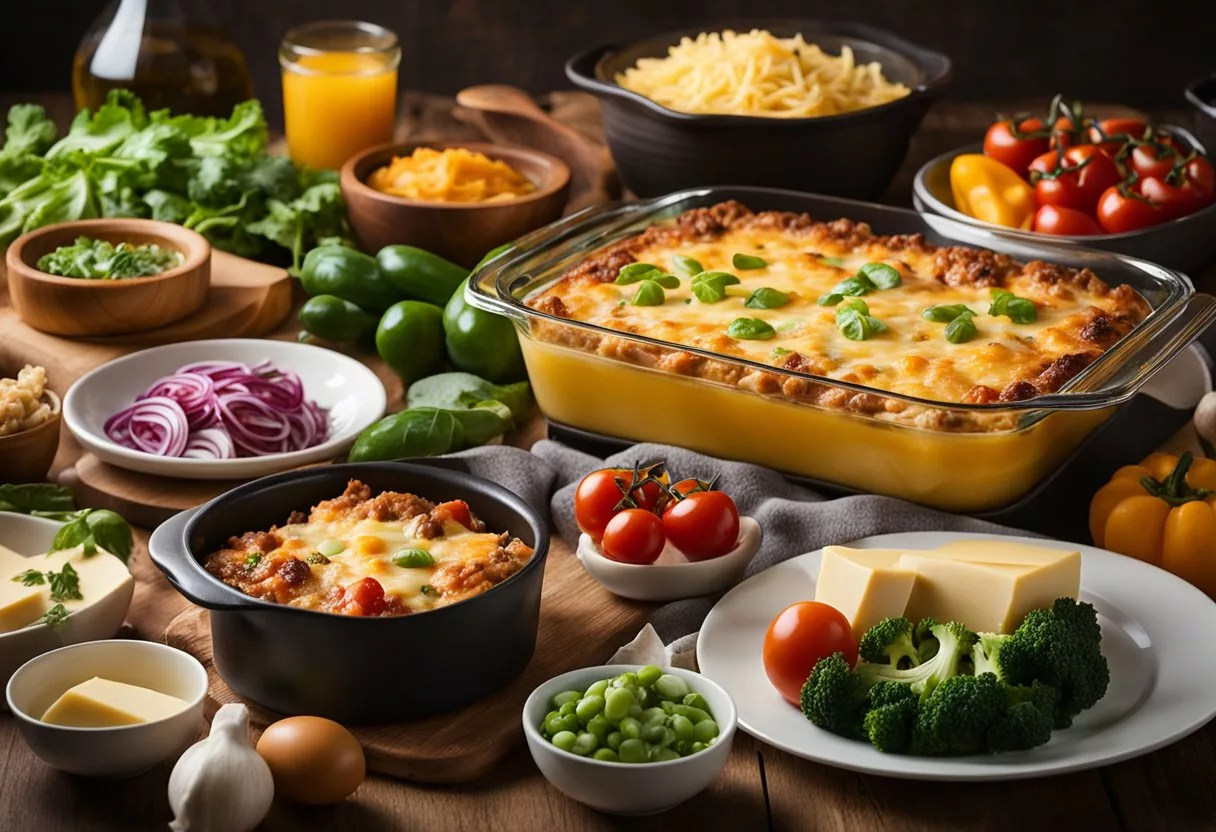
Chicken Bacon Ranch Casserole
For those seeking a hearty and flavorful meal, the Chicken Bacon Ranch Casserole is a top pick. It combines tender chicken, crispy bacon, and a creamy ranch dressing. Baked until golden, this dish typically incorporates a mix of cheeses, such as cheddar, for added richness.
Beef and Cauliflower Casserole
The Beef and Cauliflower Casserole serves as a stellar option for a low-carb dinner. Ground beef and cauliflower form its base, often seasoned with spices commonly found in taco mix. The mixture is topped with a layer of melted cheese, resulting in a robust and comforting dish.
Seafood Keto Casserole
Seafood lovers can appreciate the Seafood Keto Casserole, which melds various oceanic flavors with creamy cheeses and herbs. Ingredients may include shrimp, scallops, and fish, layered with a sauce made from cream, butter, and seasonings to highlight the seafood’s natural taste.
Green Bean and Mushroom Casserole
A ketogenic twist on a classic, the Green Bean and Mushroom Casserole, replaces traditional fried onions with almond flour for crunch. Fresh green beans and mushrooms are tossed in a savory cream sauce before being topped with a blend of cheeses.
Keto Lasagna
To recreate the Italian favorite without the carbs, Keto Lasagna relies on zucchini or eggplant slices to stand in for the noodles. Layered with a hearty meat sauce, ricotta, and mozzarella, this casserole captures the essence of lasagna while adhering to a keto-friendly framework.
Specialty Keto Casserole Variants
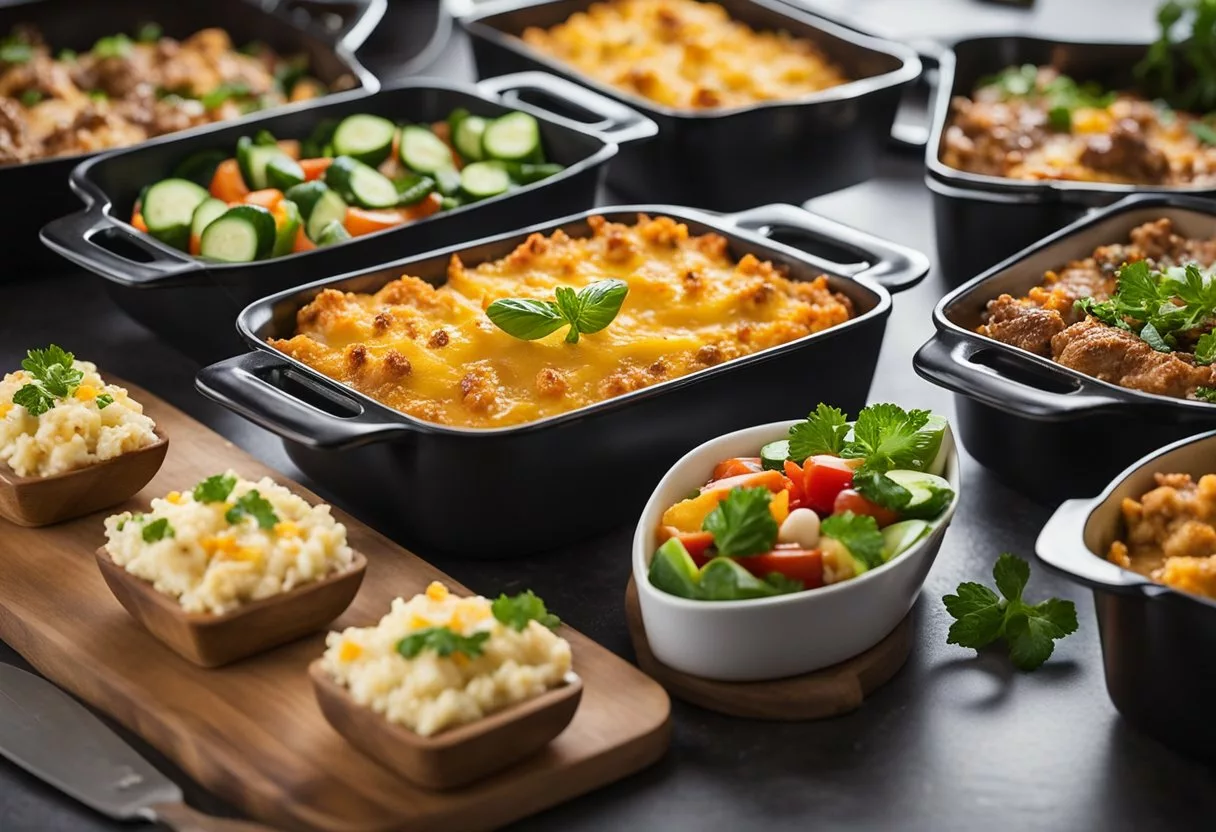
Specialty keto casserole variants cater to diverse dietary needs and preferences. This section explores vegetarian, dairy-free, and nut-free egg-free options, each designed to fit seamlessly into a ketogenic lifestyle.
Vegetarian Keto Casseroles
Vegetarian keto casseroles often feature low-carb vegetables as main ingredients. Cauliflower is a frequent substitute for starchy elements like pasta or rice, providing a nutritious base for these dishes. For vegetarian keto enthusiasts, incorporating a variety of vegetables and using cheese as a protein source can result in a satisfying meal.
Examples include:
- Cauliflower “Mac” and Cheese: A creamy mix of cheddar and cream cheese.
- Zucchini Lasagna: Sliced zucchini, layered with marinara and a ricotta cheese blend.
Dairy-Free Keto Casseroles
Individuals who are lactose intolerant or allergic to dairy can still enjoy keto casseroles by using dairy substitutes. Coconut cream or almond milk can replace dairy milk, and dairy-free cheese substitutes allow for a cheesy experience without the lactose.
Options consist of:
- Coconut Cream Chicken Casserole: Using coconut cream for a rich, dairy-free sauce.
- Vegan Cheese Cauliflower Bake: Meltable dairy-free cheese alternatives provide the “cheesy” layer.
Nut-Free and Egg-Free Keto Options
Creating a keto casserole without nuts and eggs requires creative alternatives to maintain the dish’s structure and flavor. Seeds such as sunflower or pumpkin can be used in place of nuts, and tofu or commercially available egg-replacement products can be leveraged to bind ingredients together.
Notable dishes:
- Sunflower Seed Crust Pizza Casserole: For those avoiding nuts, a crust made from ground sunflower seeds topped with a variety of toppings.
- Tofu Veggie Bake: Crumbled tofu provides protein, while assorted vegetables add texture and flavor.
Mastering Casserole Seasonings and Flavors
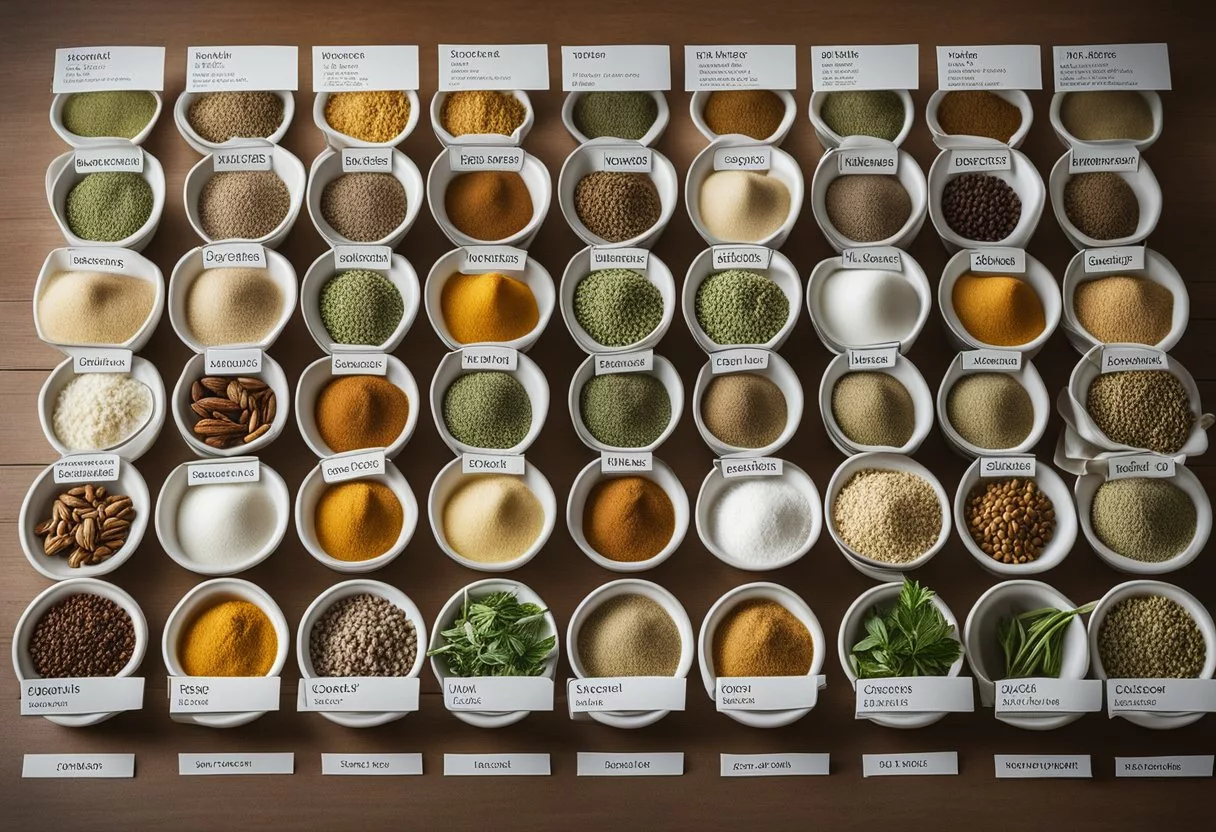
Achieving a rich and satisfying taste in keto casseroles hinges on the proper utilization of seasonings and sauces. They bring out the inherent flavors of the main ingredients and give each dish a distinctive character without adding unnecessary carbohydrates.
Herbs and Spices for Keto
In keto cooking, herbs and spices are essential for adding complexity and depth to dishes without increasing the carb content. Pepper, both black and red, is a versatile ingredient that can introduce warmth and a slight kick to any casserole. Utilizing fresh herbs such as thyme for a fragrant note or rosemary for a piney accent can elevate the profile of chicken or beef casseroles. Dried Italian seasoning, a wholesome blend that typically includes oregano, basil, and other Mediterranean herbs, pairs well with marinara sauce and cheese toppings. When incorporating seasonings into a keto casserole, consider the following spices for their bold flavors:
- Cumin and chili powder: Ideal in taco seasoning for a Mexican-inspired casserole.
- Garlic and onion powder: Provide a savory base for most casserole types.
- Paprika: Adds a warm, sweet note and a vibrant color.
Making the Most of Keto Sauces
Sauces add moisture and rich flavors to keto casseroles. Marinara sauce, made from tomatoes, garlic, and herbs, offers a tangy and robust base, especially for Italian-themed dishes. It’s crucial to choose a marinara that is low in sugar to maintain ketosis. On the other hand, alfredo sauce, with its creamy texture and cheesy flavor, is excellent for a decadent, velvety finish over meats and veggies such as spinach and broccoli.
For a fresh, herby taste, pesto can be mixed into casseroles containing chicken or fish, infusing the dish with the flavors of basil, garlic, and pine nuts. Creating a unique flavor profile, mayo can be used to add a creamy, tangy element to a casserole, while mustard might offer a piquant contrast. Remember that a little goes a long way with these condiments. Here’s a basic framework to use keto sauces effectively:
- Marinara: Combine with garlic, Italian seasoning, and cooked ground beef for a classic layer in a keto lasagna casserole.
- Alfredo: Perfect with shredded chicken, parmesan, and garlic for a white pizza-inspired casserole.
- Pesto: Toss with grilled veggies and mozzarella for a light yet flavorful option.
Cooking Methods and Techniques
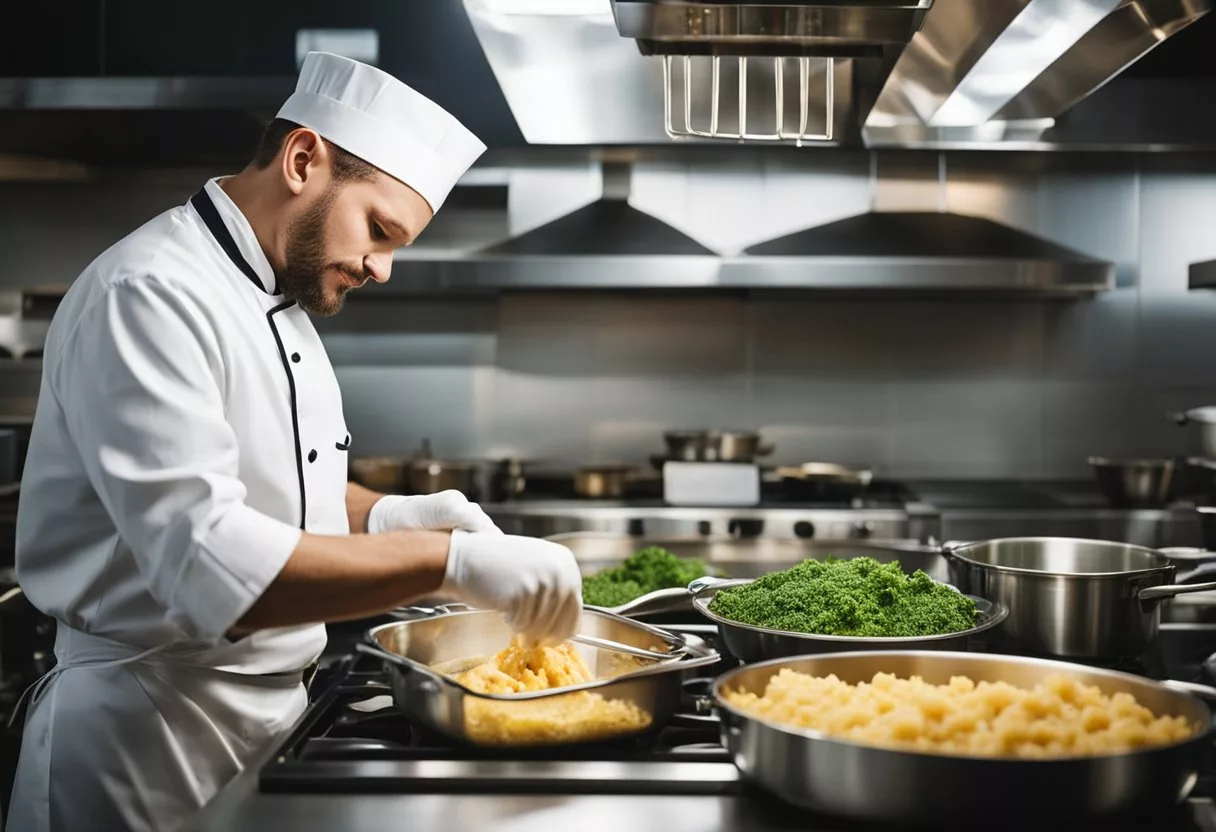
When preparing keto casseroles, the focus is on low-carb ingredients that offer robust flavors. Mastery of baking techniques and proper storage are crucial for ensuring the casserole’s quality and extending its enjoyment as a convenient meal prep solution.
Baking the Perfect Keto Casserole
The key to a successful keto casserole lies in the oven technique. Preheating the oven to the correct temperature is critical; most casseroles bake well between 350°F to 400°F. Arranging ingredients in layers ensures even distribution of flavors and textures. Casseroles often require a baking time of 20 to 40 minutes until the top is golden brown and the edges are bubbling. It’s important to use simple, whole-food ingredients that align with keto guidelines such as high-quality proteins, healthy fats, and low-carb vegetables.
Storing and Reheating Tips
Keto casseroles are ideal for meal prep as they often yield multiple servings. To store leftovers, one should let the casserole cool completely before cover it with a tight lid or wrapping it in aluminum foil. Properly stored, a keto casserole can be refrigerated for up to 3-5 days. For longer storage, freezing is an excellent option. Freeze individual portions or whole casseroles by wrapping them tightly to prevent freezer burn. Thaw overnight in the refrigerator before reheating. When reheating, cover with foil and warm in the oven at 350°F until heated through, usually about 20 minutes. This ensures the casserole retains moisture and flavor.
Serving and Presentation
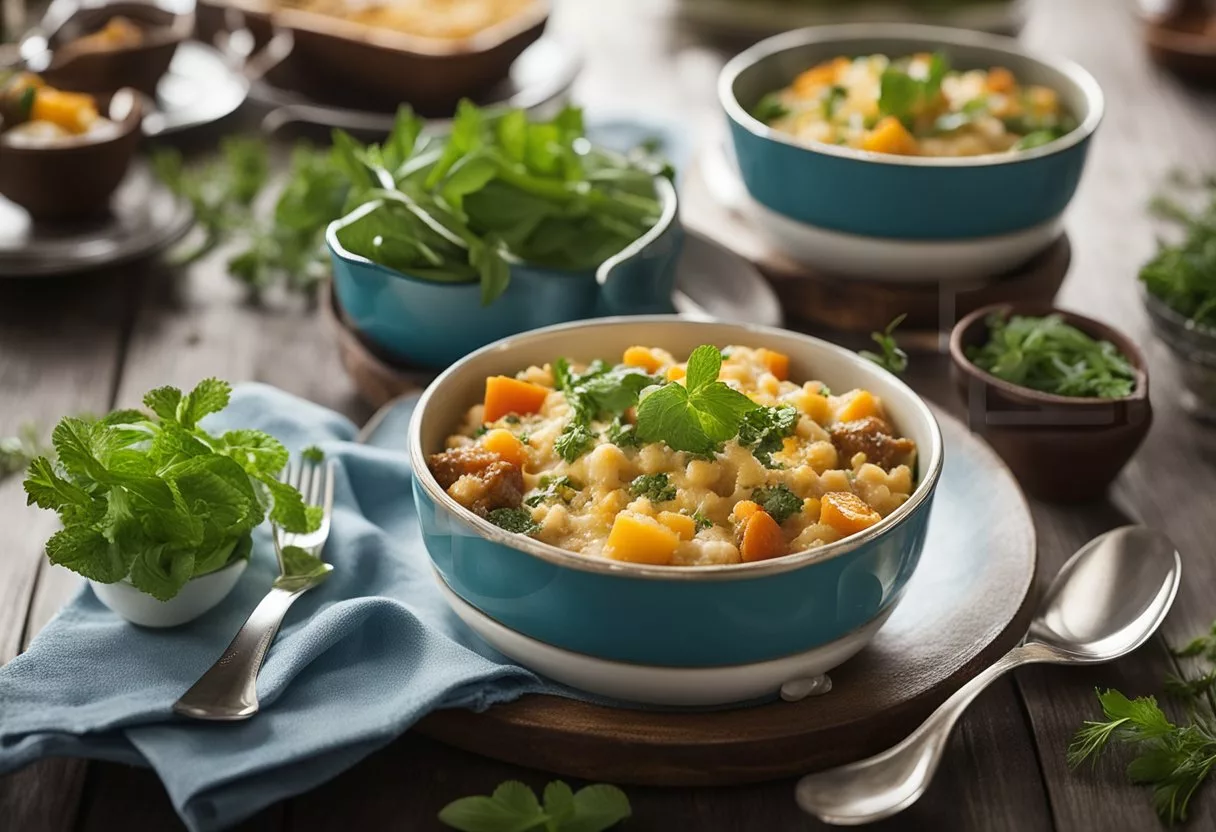
When serving a keto casserole, the impact on diners begins with visual appeal and practicality. The right dish not only complements the casserole aesthetically but also plays a pivotal role in the cooking process.
Choosing the Right Casserole Dish
The casserole dish is a central element in both the preparation and serving of a keto casserole. Glass or ceramic dishes are popular as they retain heat well and can go from oven to table with elegance. Size matters too; it should be large enough to hold the casserole without overflowing, but not so large that the ingredients spread thinly, potentially drying out during baking. For instance, a family-sized keto casserole often requires a 9×13 inch dish which is standard and versatile. When it comes to protein, ensure it’s evenly distributed throughout the dish for consistent flavor in every serving.
Accompaniments and Side Dishes
While the keto casserole may be the star of the meal, side dishes can complement and enhance it. Low-carb vegetables such as steamed broccoli or roasted Brussels sprouts are flavorful options that keep the meal well within keto guidelines. Serving a salad with a keto-friendly dressing can add a refreshing crunch and variety. For additional texture and richness, one might top their serving with a modest amount of shredded cheese, which can be broiled for a moment before serving to add a golden, bubbling finish.
Customizing Your Keto Casserole
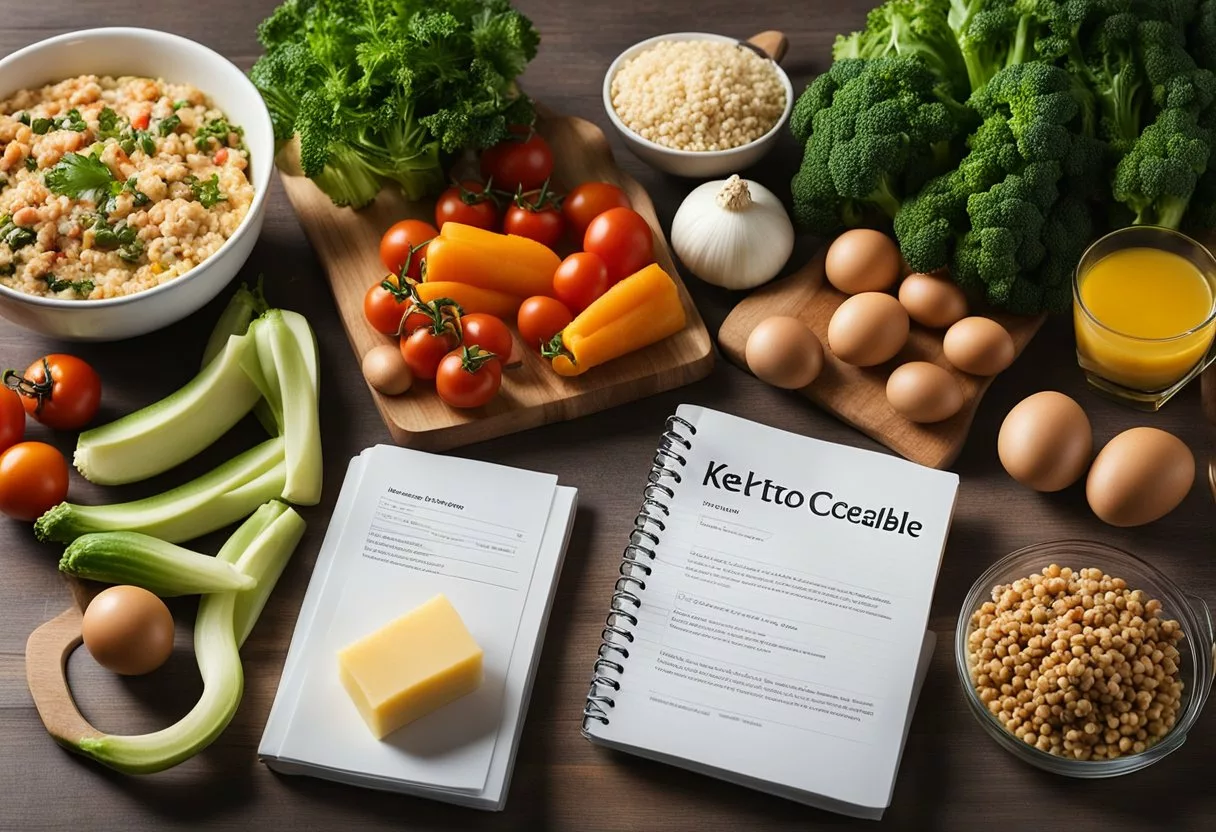
A ketogenic diet emphasizes low carb and high-fat foods. When creating keto casserole dishes, one’s focus is to balance flavor with the correct macronutrient composition to support dietary goals.
Adjusting Macronutrients for Your Needs
Proteins: Options like shredded chicken, beef, or pork are lean choices that contribute significantly to the protein content. For a breakfast variant, incorporating eggs can provide a morning protein boost.
Fats: Cheese, such as mozzarella or cheddar, can increase the fat content, essential for a keto meal. For dinner casseroles, a cheeseburger theme with these cheeses can replicate familiar flavors while adhering to keto principles.
Carbohydrates: Low-carb vegetables like zucchini, bell peppers, and tomatoes can be layered or diced into the dish. They should be included thoughtfully to keep the carb count within keto limits.
Creating Your Own Keto Casserole Recipes
Starting Points: For an easy base, use ingredients such as cauliflower or zucchini in place of traditional starchy grains and tubers. This approach provides structure to the dish while keeping it low in carbohydrates.
Variations:
- Pizza Casserole: Incorporate pepperoni, bell peppers, and a low-carb pizza sauce for an Italian inspired dish.
- Cheeseburger Casserole: Ground beef, cheese, and pickles can create a hearty dinner that satisfies the craving for a classic cheeseburger.
Meal Prep and Leftovers: Keto casseroles are ideal for meal prep. They can be made in large batches and often taste better as the flavors meld when stored as leftovers. To ensure freshness and safety, leftovers should be consumed within 3-4 days if refrigerated.
Health Considerations and Allergies
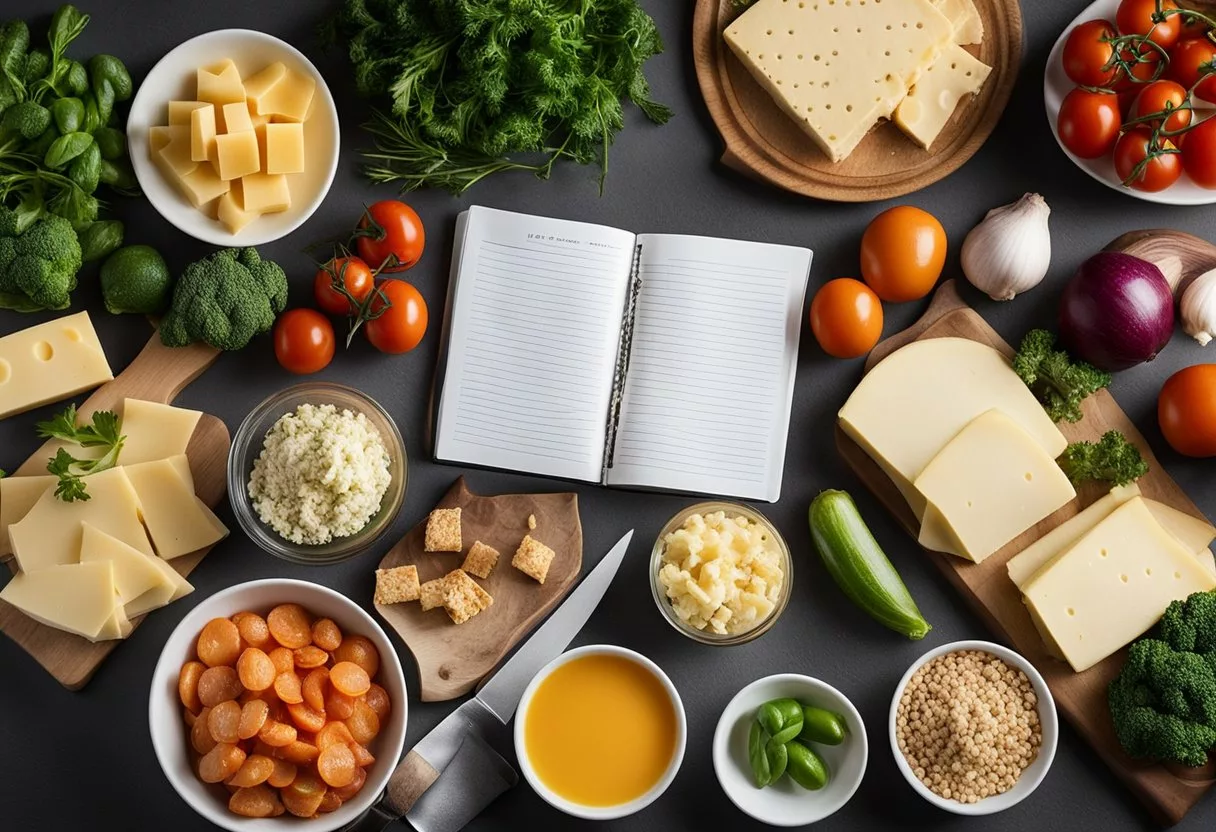
When preparing keto casseroles, it’s imperative to acknowledge common dietary restrictions and allergens that may impact individuals with specific health conditions or food sensitivities.
Gluten-Free and Other Dietary Restrictions
Gluten-Free: Keto casserole recipes typically cater to gluten-free requirements since they avoid traditional sources of carbohydrates, which often contain gluten. For example, a low-carb chicken Philly cheesesteak casserole omits the bread but includes the rest of the savory sandwich ingredients. Casserole enthusiasts must ensure all additives, such as sauces and seasonings, are certified gluten-free to avoid cross-contamination.
Low-Carb: Adhering strictly to a keto diet means keeping carbohydrate consumption to a minimum. Casseroles are particularly suitable for this diet as they can be rich in proteins and fats while being low in carbs. For instance, a recipe may boast mediterranean flavors like pesto and olives while staying within the 6-8g net carb range.
Allergies: Keto recipes may be modified to accommodate common food allergies. A dish that traditionally contains dairy, such as a pesto chicken casserole, can be made with dairy-free cheese substitutes. Individuals with nut allergies, often catered to by websites like Wholesome Yum, should also check ingredients in low-carb flour replacements to prevent allergic reactions.
It’s critical for individuals with food allergies to review every ingredient listed in keto casserole recipes, even if the dish is inherently low in allergens like gluten or dairy. Keto diets can indeed be aligned with a gluten-free lifestyle and can be adjusted for other dietary restrictions, ensuring a safe and enjoyable meal for those with specific health considerations.
Frequently Asked Questions
Addressing common inquiries, this section provides clear answers on preparing keto casseroles, ideal for anyone pursuing a low-carb lifestyle.
What ingredients are commonly used in a beef keto casserole to maintain low carb content?
In beef keto casseroles, ingredients such as ground beef, low-carb vegetables like cauliflower and zucchini, and cheeses are used. To enhance flavor, they often incorporate spices and a heavy cream or coconut cream as a binder.
How do you make a chicken keto casserole that is both flavorful and satisfying?
One can prepare a chicken keto casserole by using a base of cooked chicken, combining it with vegetables like spinach, and adding cream cheese or sour cream for richness. Seasonings such as garlic, paprika, and thyme contribute to a deep flavor profile while keeping carbs minimal.
Can you share some make-ahead keto casserole recipes that are convenient for busy schedules?
Make-ahead keto casseroles often feature ingredients that hold up well when refrigerated, such as eggs in a breakfast casserole or beef in a taco-inspired dish. These casseroles can be assembled ahead of time and baked when required, offering convenience without compromising on nutritional goals.
What are some low-carb casserole options suitable for individuals with diabetes?
Low-carb casserole options suited for individuals with diabetes include dishes that use meats like chicken or beef, along with non-starchy vegetables. A cauliflower mash can substitute traditional starches, and cheese or almond flour provide good binding options that don’t spike blood sugar levels.
What are the characteristics of a healthy keto casserole, and how do you balance nutrients?
A healthy keto casserole should be rich in protein and healthy fats while low in carbohydrates. It’s important to include a variety of vegetables to provide essential vitamins and minerals, balancing nutrients effectively within the dish.
How can you recreate a keto-friendly version of a pizza casserole without the carbs?
To create a keto-friendly pizza casserole, one should use a base of ground chicken or cauliflower as a crust substitute, topped with sugar-free tomato sauce, mozzarella cheese, and traditional pizza toppings like pepperoni. This mimics the flavors of pizza without the high carbs of conventional dough.
